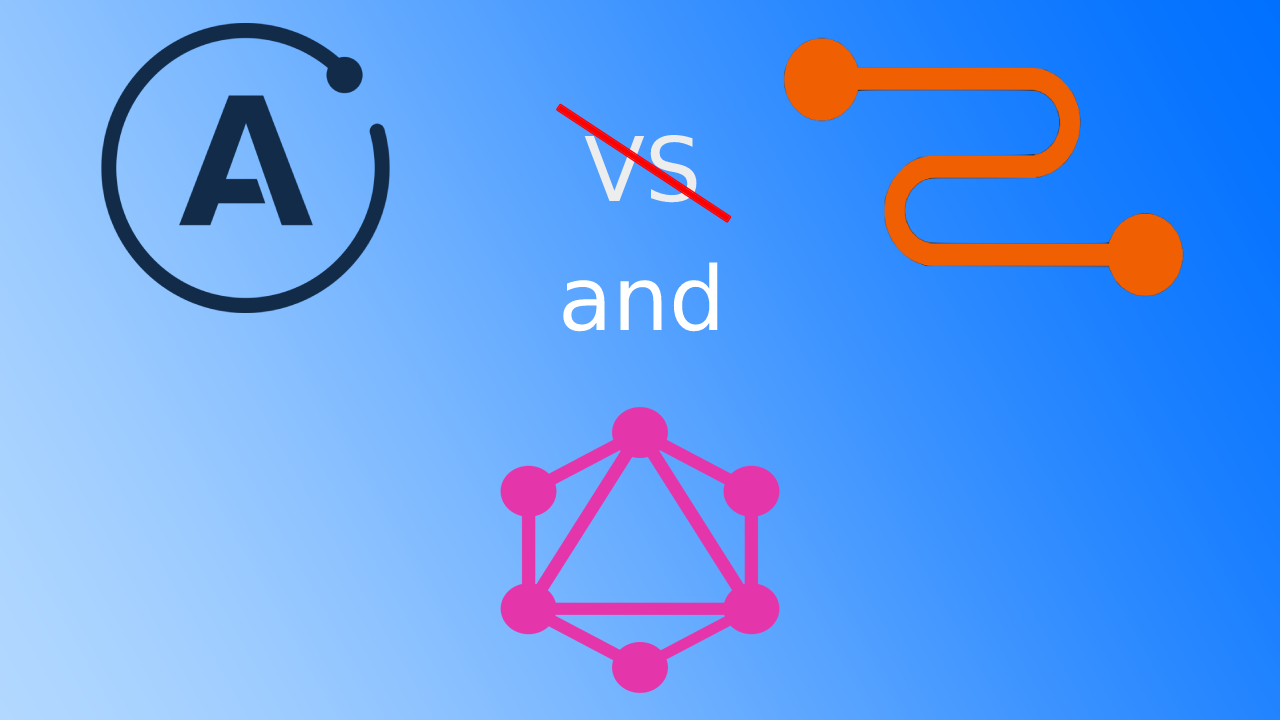
In this guide, we will explore how to integrate GraphQL with React Native using two popular clients: Apollo Client and Relay Client. Both libraries offer powerful tools for working with GraphQL, but they have different approaches and features.
We will cover:
-
Apollo Client Setup
Integrate Apollo Client with React Native and connect to a GraphQL server. -
Relay Client Setup
Configure Relay Client in your React Native project and set up a GraphQL environment.
APOLLO CLIENT SETUP
-
Install Apollo Client and Dependencies
Install Apollo Client and related libraries using Yarn or npm:
yarn add @apollo/client graphqlor
npm install @apollo/client graphql -
Set Up Apollo Client
Create an Apollo Client instance and configure it to connect to your GraphQL server. In your project directory, create a file named
ApolloClient.js:// ApolloClient.js import { ApolloClient, InMemoryCache } from '@apollo/client'; const client = new ApolloClient({ uri: 'https://your-graphql-endpoint.com/graphql', cache: new InMemoryCache(), }); export default client; -
Integrate Apollo Client with React Native
Wrap your application in an
ApolloProviderto provide Apollo Client to your React Native components. Update yourApp.jsfile:// App.js import React from 'react'; import { ApolloProvider } from '@apollo/client'; import client from './ApolloClient'; import YourMainComponent from './YourMainComponent'; const App = () => ( <ApolloProvider client={client}> <YourMainComponent /> </ApolloProvider> ); export default App; -
Integrate Apollo Client with React Native
Wrap your application in an
ApolloProviderto provide Apollo Client to your React Native components. Update yourApp.jsfile:// YourComponent.js import React from 'react'; import { Text, View } from 'react-native'; import { useQuery, gql } from '@apollo/client'; const GET_ITEMS = gql` query GetItems { items { id name } } `; const YourComponent = () => { const { loading, error, data } = useQuery(GET_ITEMS); if (loading) return <Text>Loading...</Text>; if (error) return <Text>Error: {error.message}</Text>; return ( <View> {data.items.map(item => ( <Text key={item.id}>{item.name}</Text> ))} </View> ); }; export default YourComponent;
RELAY CLIENT SETUP
-
Install Relay Client and Dependencies
Install Relay and related packages:
yarn add react-relay relay-runtime graphqlor
npm install react-relay relay-runtime graphql -
Set Up Relay Environment
Create a Relay Environment instance and configure it. In your project directory, create a file named
RelayEnvironment.js:// RelayEnvironment.js import { Environment, Network, RecordSource, Store } from 'relay-runtime'; const fetchQuery = async (operation, variables) => { const response = await fetch('https://your-graphql-endpoint.com/graphql', { method: 'POST', headers: { 'Content-Type': 'application/json', }, body: JSON.stringify({ query: operation.text, variables, }), }); return response.json(); }; const environment = new Environment({ network: Network.create(fetchQuery), store: new Store(new RecordSource()), }); export default environment; -
Integrate Relay Environment with React Native
Use the RelayEnvironmentProvider to provide Relay Environment to your components. Update your
App.jsfile:// App.js import React from 'react'; import { RelayEnvironmentProvider } from 'react-relay'; import environment from './RelayEnvironment'; import YourMainComponent from './YourMainComponent'; const App = () => ( <RelayEnvironmentProvider environment={environment}> <YourMainComponent /> </RelayEnvironmentProvider> ); export default App; -
Querying Data with Relay Client
Use the
useLazyLoadQueryhook to fetch data in your components. For example:// YourComponent.js import React from 'react'; import { Text, View } from 'react-native'; import { graphql, useLazyLoadQuery } from 'react-relay/hooks'; const GetItemsQuery = graphql` query YourComponentQuery { items { id name } } `; const YourComponent = () => { const data = useLazyLoadQuery(GetItemsQuery, {}); return ( <View> {data.items.map(item => ( <Text key={item.id}>{item.name}</Text> ))} </View> ); }; export default YourComponent;
Summary
- Apollo Client is easy to set up and offers a flexible approach to managing GraphQL queries and caching.
- Relay Client provides a powerful, declarative approach to data fetching with built-in support for pagination and data normalization.
What other GraphQL topics would you like to see covered? Let me know in the comments!